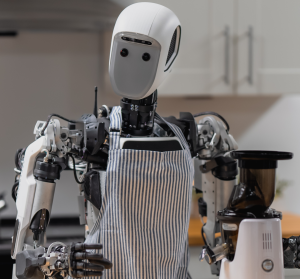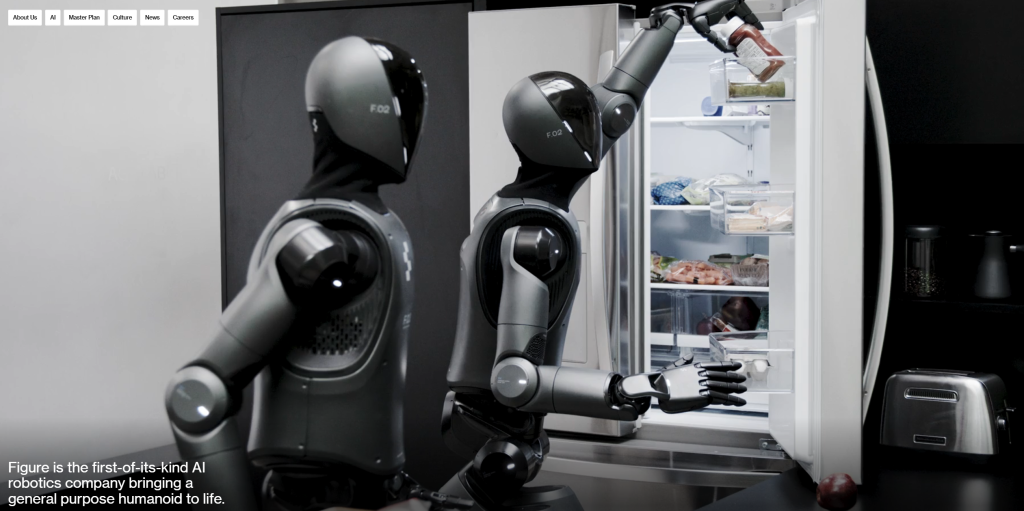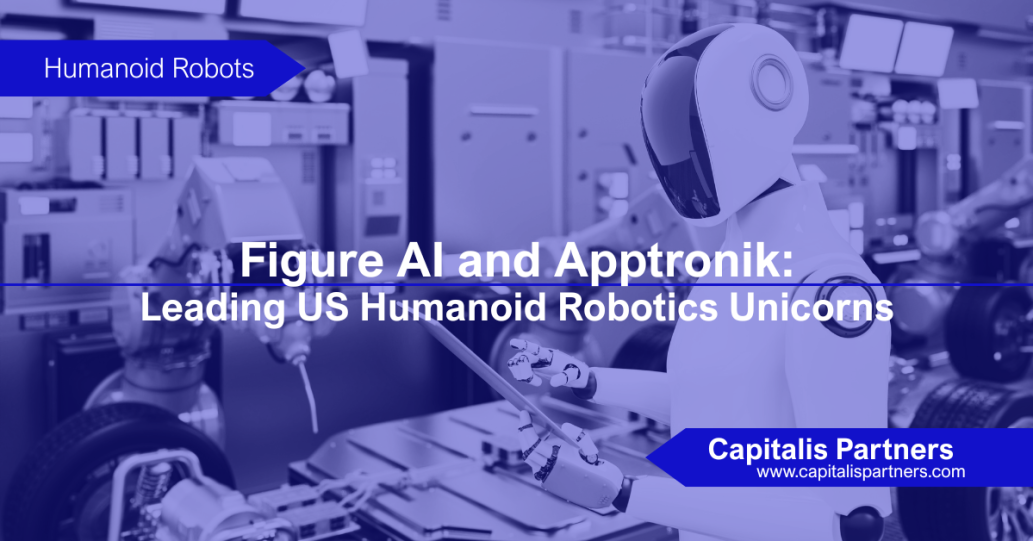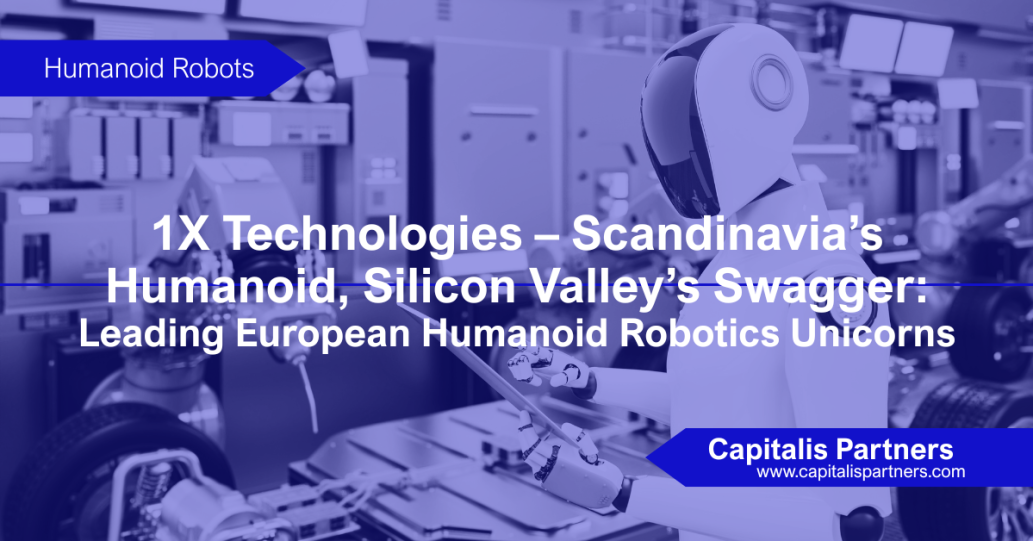Humanoid Robots – Leading U.S. Unicorns
Chapter 1 of Humanoid Robots Series
The last 24 months have marked a turning point in humanoid robotics. The space has grown rapidly and continues to attract new capital, but there are very few pure-play public companies other than Telsa. While Telsa has been capturing headlines and X-sphere, an interesting robotics battle is unfolding quietly in the private markets.
In the US, on one side stands Apptronik in Texas and on the other Figure AI in California. In Europe, 1X Technologies has launched pre-orders for Neo, its home focused robot for $20,000 apiece. In China, attention is turning to Unitree’s anticipated IPO in 4Q25. Reuters reported that Unitree is looking as much as Rmb50bn (US$7bn) for its planned IPO, with listing application documents expected to be submitted in Q4 2025. This IPO could serve as a key catalyst and valuation benchmark for future funding activity, especially given the significant valuation gap between Chinese and US players, such as Figure AI (US$39bn).
Apptronik and Figure AI: Two Different Approaches
Both Apptronik and Figure AI are chasing a goal that has eluded engineers for decades: building humanoid robots that look, move, and think enough like us to work alongside people in the real world. Armed with capital, cutting-edge hardware, and teams fluent in both mechanics and machine learning, the two unicorns are accelerating toward commercial deployment. Their shared ambition—a humanoid labour force ready for warehouses, factories, and eventually homes—marks the next chapter in the race to turn science fiction into industry reality. But their DNAs and deployment strategies are very different.
Apptronik and the Apollo Linage
Apptronik is a robotics company, a spin-off from the Human Centered Robotics Lab at the University of Texas at Austin in 2016, where the founders had been working on robotics projects, including contributing to NASA’s Valkyrie robot. Apptronik has spent over a decade grinding through prototypes, learning hard lessons inside the Valkyrie program, building exoskeletons with mythological names, and failing just enough to know where the traps are. Its flagship robot, Apollo, is the product of that long slog.

If Figure AI channels Silicon Valley’s speed and ambition, Apptronik represents a different tradition—one grounded in NASA’s engineering rigor. The company’s roots trace back to the Valkyrie program, tested at Johnson Space Center, where early prototypes revealed just how unforgiving humanoid robotics can be. Machines tipped over at the wrong angles, cables frayed, actuators overheated. Those lessons in failure became the foundation of Apptronik’s approach to Apollo.
A former NASA engineer who joined Apptronik in 2018 recalls one defining moment: a Valkyrie unit collapsing mid-test during a DARPA trial. “The machine just folded at the knees like a marionette whose strings had been cut,” he said. “We were embarrassed, but more importantly, we realized that actuators were the entire ballgame.” That experience seeded an enduring obsession: designing actuators that could be mass-produced, easily serviced, and trusted under stress.

Apollo’s actuators embody that philosophy. They are linear electromechanical drives with precisely tuned gear ratios—simpler, cheaper, and more robust than rotary systems that depend on costly harmonic drives. Each actuator generates force along a straight axis, translating it through linkages into rotational motion. Apptronik engineers track two performance metrics above all: force density and thermal dissipation. Embedded strain gauges and thermistors feed real-time data into a control loop running hundreds of times per second. When a joint overheats, torque output throttles automatically. Yet the entire assembly is designed to be swapped in under ten minutes. “Every actuator has to be thought of like a car brake pad—cheap, strong, replaceable,” said one engineer.
The Apollo line has advanced quickly. The first model, Apollo 1, introduced in 2022, was little more than a tethered lab demonstrator. Apollo 2, unveiled a year later, added hot-swappable batteries that enabled nearly continuous 22-hour operation with enough packs in rotation. Standing five foot eight and weighing 160 pounds, it carries 25 kilograms safely across seventy actuators—Apptronik’s first truly commercial platform. Apollo 3, expected in 2027, will add dexterous multi-finger hands. By 2029 or 2030, Apollo 4 is slated to arrive as a general-purpose worker, built by the tens of thousands and priced to compete directly with human labour.
Its deployment approach prioritizes getting robots into the field for pilot programs and production work. The goal is to secure contracts with businesses and build practical, deploy-able robots.
Figure AI and the Helix VLA
Figure AI, by contrast, embodies classic Silicon Valley momentum—fueled by ambition, speed, and scale. Founded in 2022 by serial entrepreneur Brett Adcock, the company has moved at a remarkable pace, securing billions in funding within just three years and positioning itself at the forefront of the humanoid robotics race. The company hit a $39 billion valuation in September 2025.
Figure AI takes an “AI-first” approach, leveraging a software-based learning system to give its robots human-like reasoning and the ability to download skills. It uses a single, unified neural network and relies on human-generated video data to train its robots to perform human-like tasks and reasoning.
The company’s technical strength lies in its full-stack design, where all elements from sensing hardware to vision‑language‑action (“VLA”) models and mechanical actuation are engineered in synchrony. Early versions of Figure’s robots used LLMs provided by OpenAI, but the company soon pivoted toward building its proprietary AI system (“Helix”), a VLA neural network tailored for embodied operation. This model allows the robots to perceive their surroundings, interpret spoken instructions, and perform sophisticated physical tasks. Helix is designed for learning by observation, enabling the robots to adapt fluidly to a wide range of tasks rather than being limited to rigid programming.

In Feb 2025, Figure announced Figure 02 robots, powered by Helix. Initiated with a single prompt from a human, the robots in the company’s video above visually evaluated the scene and then cooperated to identify each object and move the object to a proper location in the kitchen. There were couple of noteworthy takeaways from the video: First, the robots worked independently on the items placed in front of them, until it became evident that one needed to hand off a few items to a destination within the other’s reach. Second, the robots did not communicate verbally, but there were noticeable pauses in their interactions where they stared at each other in an uncanny “telepathic” interaction. To finish the requested task, the robots closed a drawer, closed the refrigerator door, and placed a bowl at the side of the counter. These were sub-tasks intuitive to humans, but they weren’t specified in the request. Figure said this demonstrated the completeness of the training actions, and generated the VLA by collecting about 500 hours of high-quality, multi-robot, multi-operator dataset of diverse tele-operated behaviors.
Eight months later, the company released Figure 03, its latest iteration. The company said its engineering and design teams have completed a comprehensive redesign of both hardware and software. The robot is about 5 feet 6 inches tall and weighs about 132 pounds, which has 9% less mass and significantly less volume than Figure 02, making it easier to maneuver through household spaces. New palm cameras in the base (one on each hand) provide close-up views within 5 cm of an object being manipulated, enabling visual perception when cameras are blocked by cabinets, countertops, and clutter. That combination, high-skill sensing in the hands plus whole-body perception, is the next stage in closing the loop on reliably manipulatable everyday objects.
The Figure 03 battery incorporates multiple layers of protection against abuse or malfunction, the company said. This includes safeguards at the battery management system (BMS), cell, interconnect, and pack levels. The battery has already achieved certification to the UN38.3 standard. It can operate for as long as five hours on a single charge with conductive wireless charging through its feet. Charging coils in the robot’s feet allow it to simply step onto a wireless stand and charge at 2 kW. In a home setting, this means the robot can automatically dock and recharge itself as needed throughout the day.
Who Wins?
Where Apptronik is patient, Figure is breathless. Where Apptronik speaks in field tests, Figure speaks in compounding data curves. Both firms merit recognition for hauling humanoid robots out of research labs and into the world of paying customers. As markets shift from applauding flashy demonstrations to valuing actual deployments, the advantage will lie with the outfit that can tighten its feedback loop and iterate most swiftly.
It’s impossible to miss the buzz around the humanoid robotics race or know for sure who the winner is going to be. We will continue to monitor this space, especially in terms of production, deployment and interplay with AI. Next, we will look at some of the leading players out the US.
Unicorn Funds Interest Indication Form
We are offering opportunities to invest in leading global unicorns. Let us know which companies you have been following or want to gain exposure to, by filling out this form. We love to hear from you.

















